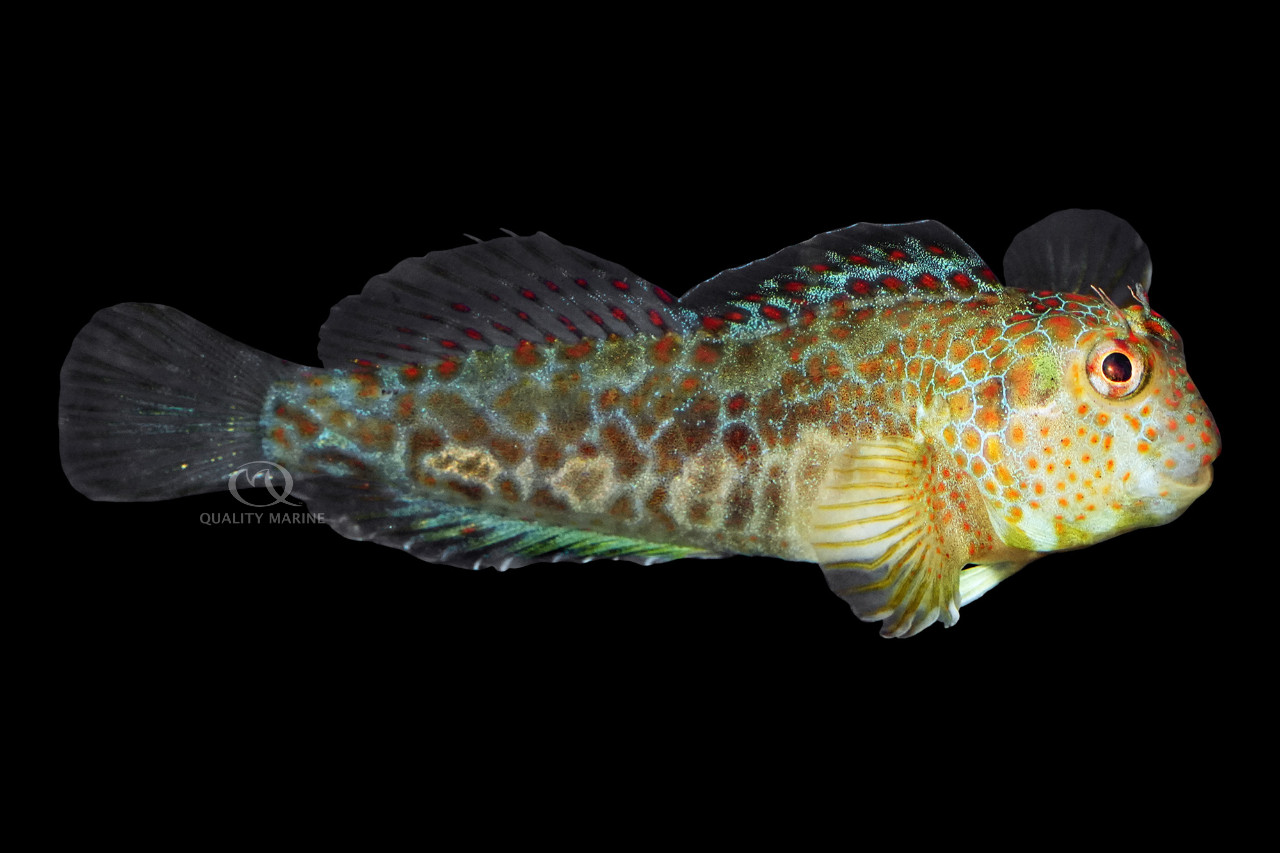Highly Underrated Fish - Aquacultured Tessellated Blenny

Blennies of all types remain one of the most criminally underrated aquarium fish, perhaps ever. Regardless of the genus you choose, they are all super personality plus, always full of amazing activity, and the majority of them are both hardy and gorgeous. You can either love them, or just be wrong. Among this group of perfect piscine pets, perhaps the most underrated is the Tessellated Blenny, which we're getting as an aquacultured species! In the science world, they go by the name Hypsoblennius invemar, which is your next fish geek meeting tongue twister!
Hypsoblennius invemar is found primarily in the Western Atlantic, from the USA and Gulf of Mexico to Rio de Janeiro, Brazil. In the wild, they're found in very shallow water, usually less than 16 feet deep. They're most often collected around empty barnacle shells in clear waters. They make distinct pairs when mating and lay eggs that attach to the substrate before hatching. There is a larval period afterwards that we don't have a ton of solid information on, but it must be manageable as we are getting a consistent supply of aquacultured specimens from our vendor partner.
The Tessellated Blenny is a pretty diminutive fish, as the biggest specimen on record is a smidge over two and a half inches long and two inches is a much more achievable adult size for most of them. Between this size and a swimming habit that isn't exactly fast or sleek, they don't need a ton of space. One could easily be kept in an aquarium as small as 30 gallons for its whole life. They'll spend most of their time perched on rocks, surveying the tank and munching down the algae and biofilm growing there. Give them plenty of rock work, with a copious number of hiding places, swim throughs and perches. They don't need a ton of flow, or light, but they should have a covered display. When you talk to all the hobbyists here who have kept Tessellated Blennies, we'll all tell you how great they are, and how hardy, but some of us have lost them to the fish jumping out of the tank overnight and not being discovered in time to save them. Cover your display.
Water quality wise, Tessellated Blennies are very adaptable fish. They can live in specific gravity between 1.020 and 1.026. Water temps could be anywhere between the high sixties and the high seventies Fahrenheit. They'll be just fine as long as you keep your nitrates under 20ppm (and obviously, we'd like to see everyone's tank stay under five parts per million as this is just a better environment for everything and will help you control algae. The pH should be stable anywhere from 8.0 to 8.4.
When it comes to algae, these fish are a great choice for controlling it in the home aquarium. Algae is a very important part of their diet but should never be considered to be the only way they get food. They'll need supplemental feeding, and the Nutramar Complete Pellets are our choice for their primary food here, though you could also use the shots as the Oyster Blennies like to graze and the shots will offer them an opportunity to do so. You can also supplement this diet with some thawed foods but stay away from super high protein stuff like bloodworms and tubifex. Instead utilize things like Gamma's Vegetarian Diet, or their Brine plus Spirulinia. As we've referenced, they'll eat algae in the tank, but if your tank doesn't have much in it, you can also feed your fish some of the Nutramar Nori and Ogo with clips in the tank. If you have a massive algae outbreak, you should get this under control before adding the fish, so their environment is more stable before adding them.
Now you know you want one, so what can you keep with your Hypsoblennius invemar? They are pretty adaptable and peaceful with most fish, with the notable exception of other Blennies and similar looking fish (looking at you Hawkfish). They'll be just fine with most fish unless those fish are very aggressive or are super passive and resemble the Blenny. Fish like Cardinals, Anthias, Tangs, Rabbitfish, Clowns, lots of Wrasses and some of the nicer damsels like Blue Chromis will all be fine, even some of the more docile Triggers like Blue Throats shouldn't be an issue. Hypsoblennius invemar is low risk in reef tanks, as they won't target corals as food, but this is a “Combtooth” Blenny, and they will chew on anything that has a bit of algae growth or biofilm on it. If your corals are unhealthy and start do develop spots of algae, the Blenny will attack those with fervor and the resulting over attention to the coral may be harmful to it. We don't suggest having these fish with bivalves like Tridacna clams for similar reasons; the grazing activity on the shells and occasionally on the mantle can force the Clams into hiding for too long and they run the risk of slowly withering away.
There is very little not to like about Tessellated Blennies. They're hardy, very beautiful, useful in keeping the algae in check, they're very interactive and have incredibly unique behaviors in the home aquarium. These being aquacultured, they're also super adaptable and easy to feed. Like we said, they are a top ten most underrated fish by most of the aquarists around the building. Head to your Local Fish Store and ask them about getting you an Aquacultured Tessellated Blenny from Quality Marine today!